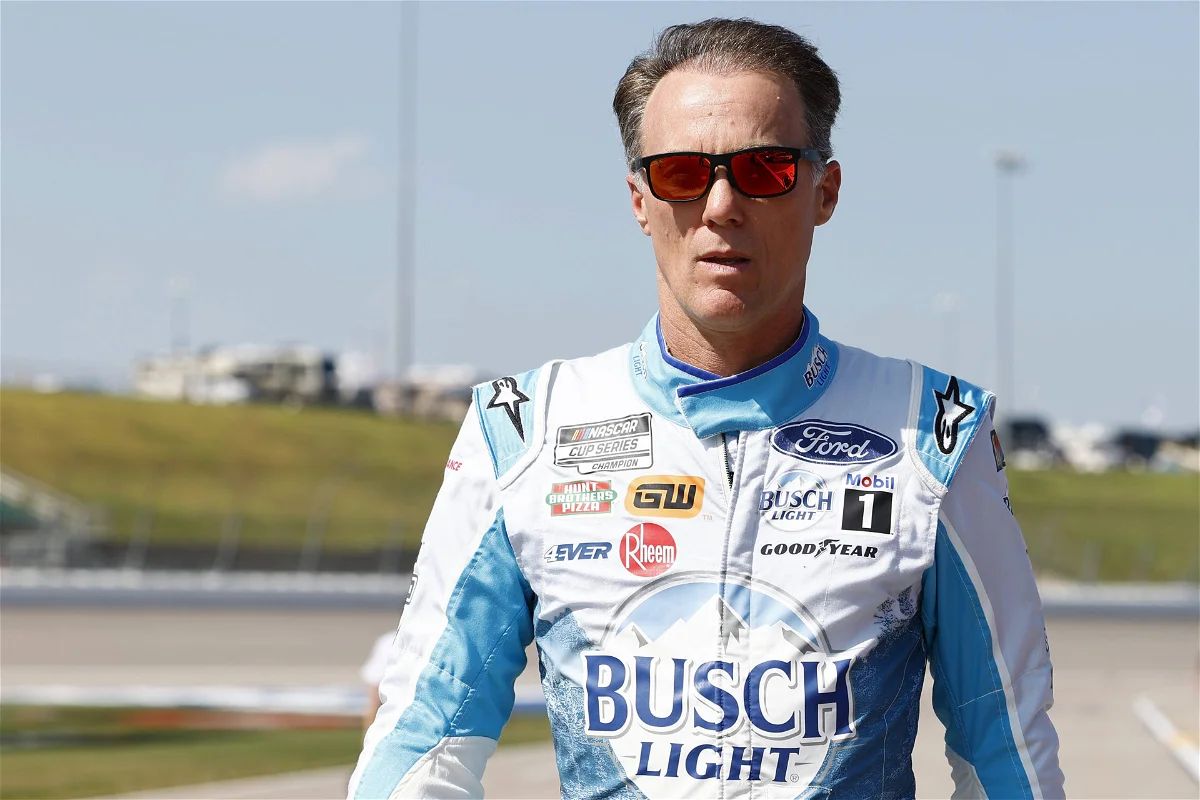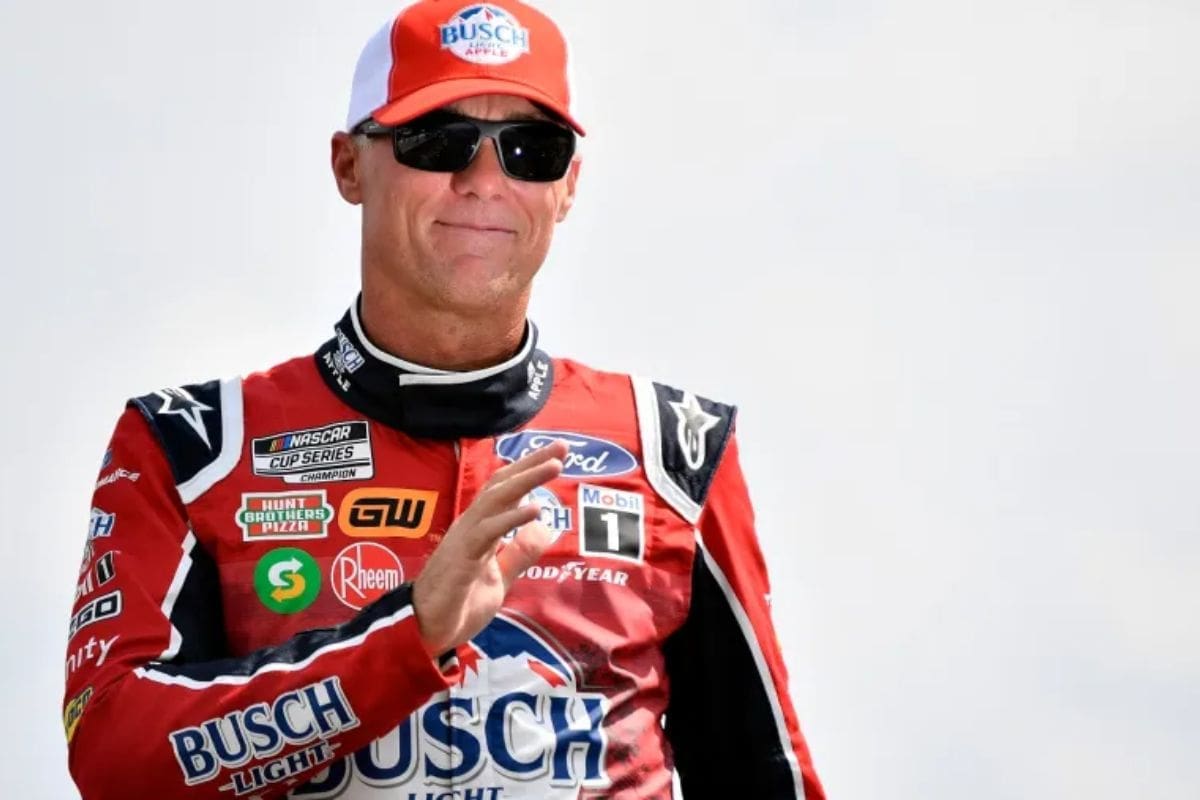Kevin Harvick Slams Toyota: In a recent and controversial turn of events at Talladega, NASCAR veteran Kevin Harvick sharply criticized Toyota’s racing strategy, calling it a “bonehead move” that resulted in a significant multi-car wreck. This incident not only inflamed tensions among racing teams but also ignited a broader debate about the tactical approaches in motorsports racing. Harvick’s disparagement points to a deeper discourse on the balance between aggressive competition and safety protocols, highlighting how strategic decisions can pivot from masterful to disastrous. As the racing community and fans scrutinize Toyota’s decisions, one wonders how this critique will influence future strategies in high-stakes races.
Key Takeaways
- Kevin Harvick criticized Toyota’s single-file strategy at Talladega as a risky and inflexible tactic.
- Harvick labeled the strategy a “bonehead move,” sparking significant controversy.
- The Toyota formation led to a major crash, questioning the safety of such tactics.
- Harvick’s critique emphasized the need for more adaptable and dynamic racing strategies.
- The incident sparked outrage and a reevaluation of team strategies in NASCAR racing.
Toyota Strategy Backfires at Talladega
Despite Reddick’s securing a victory in GEICO 500 at Talladega, Toyota’s tactical decision to maintain a single-file formation among its drivers ultimately resulted in catastrophe, resulting in a major crash instigated by John Hunter Nemechek. This approach, while initially seeming to offer a strategic advantage by reducing air resistance and improving fuel efficiency, exposed the inherent risks associated with closed pack, monocultural formations in high-stakes racing scenarios.
The incident occurred when Nemechek encountered an unexpected bump on the track, a common hazard in motorsports venues known for their high speeds and intense competition. This minor misstep was amplified by the close proximity of the Toyota convoy, resulting in a chain reaction that led to a multi-car collision.
In the aftermath, racers such as Bubba Wallace and Denny Hamlin found themselves sidelined, a move not without criticism, according to Kevin Harvick. Harvick remarked that the decision wasn’t the wisest course of action.
Harvick Criticizes Toyota Strategy
With over two decades of racing under his belt, Kevin Harvick’s familiarity with Talladega Superspeedway runs deep. His discontent with the strategy proposed by Toyota drivers stems from his extensive experience on the track. The notion of a single-file pack, especially among cars of the same manufacturer, is an anomaly at Talladega, a fact not lost on Harvick. During a recent episode of his Happy Hour podcast, he passionately dismantled the strategy, highlighting its departure from the norm at the iconic racetrack.
“Reddick was put in that position, he and Truex were put in that position because of just a pure bonehead move from the 7 or 8 Toyotas that were drafting together. They had kind of fooled everybody on the strategy and put themselves in a position to be really in control of the race and you saw that play out for a couple of them but the other 4 or 5 of them were wrecked running in a single file line.” Harvick
Harvick’s critique is grounded in a profound understanding of racecraft, particularly at superspeedway tracks where strategic placement within the pack can drastically influence a driver’s ability to respond to race developments. The single-file strategy constrained Toyota drivers, limiting their flexibility to adapt or shift positions as the race evolved. This rigid formation is often perceived as a conservative approach, aiming to avoid early wrecks or aggressive door-to-door racing. However, Harvick argues that this tactic, rather than safeguarding the drivers, actually exposed them to increased risk by reducing their maneuverability and ability to react spontaneously to changes within the racing environment.
Harvick Blames Toyota Drivers for Wreck
In his analysis of the Talladega incident, Kevin Harvick pointed to the Toyota drivers’ closed pack, single-file drafting formation as the primary catalyst for the multi-car wreck that occurred during the race. Harvick described how the strategic alignment and dynamics of the Toyota team during the drafting sequence contributed greatly to the chaos on the track.
- Misaligned Drafting Coordination: Harvick noted that the Toyota drivers’ attempt to maintain a single-file line was mismanaged. This misalignment in their drafting formation likely caused disruptions in airflow and vehicle stability among the surrounding cars, increasing the risk of contact.
- Aggressive Pack Dynamics: The aggressive nature of pack racing, particularly in the context of restrictor plate tracks like Talladega, requires precise driving and spatial awareness. Harvick argued that the Toyota drivers failed to adapt their racing style to the pack dynamics, leading to miscalculations in speed and distance between the vehicles.
- Tactical Errors in Critical Moments: The critical moments leading up to the wreck saw tactical errors from the Toyota camp, according to Harvick. These included sudden lane changes and braking inconsistencies, which are particularly risky during high-speed drafting.
“I just…there’s always things that can happen but that is just a terrible move by the group of Toyotas that were running there together. We talked about it on the broadcast, when you go into turn 3 and you go over all those bumps, I think the cars kind of got out of shape and they were all pushing and got misaligned.” Harvick
Nemechek’s Role in the Wreck
Amidst the finger-pointing at the track for the wreck, Kevin Harvick shifts some of the blame onto Legacy Motor Club’s latest signee, John Hunter Nemechek. The 2014 Cup Series champion raises a compelling argument, suggesting that Nemechek’s recent addition to the team plays a role in the incident.
In the aftermath of the Toyota wrecks at Talladega Superspeedway, while many point fingers at the track surface, Kevin Harvick offers a different perspective. Harvick suggests that John Hunter Nemechek shares responsibility for the incident. According to Harvick, had Nemechek lifted at the appropriate moment, he could have avoided colliding with Bubba Wallace, thus preventing the chain reaction that led to the wreck. Harvick’s analysis shows the delicate balance between teamwork and individual execution in NASCAR racing, highlighting how a misstep in coordination can lead to catastrophic consequences on the track.
“I’m alright.”
Erik Jones spoke with reporters after this hard crash involving the Toyotas at Talladega. #NASCAR
Via @NASCAR pic.twitter.com/nVwmjPWwRF
— NASCAR on NBC (@NASCARonNBC) April 21, 2024
“By the time you got 3 or 4 cars back in that group…I don’t think John Hunter ever lifted. I think he just was so late to the lift party…Erik Jones was kind of the one that got shot out of the cannon and wrecked and then they bounced off the wall and collected Denny Hamlin and just…I think they knew they were in a position, needed to make time and just got to push him too hard, got misaligned and crashed together running single file.” Harvick
Analyzing the dynamics of the race, it is vital to take into account the split-second decisions that drivers must make at speeds exceeding 200 mph. At such high velocities, the aerodynamic draft plays a significant role in influencing a car’s behavior. The accusation that Nemechek did not lift off the throttle suggests a potential misjudgment or miscommunication in the heat of the race. This decision, whether due to inexperience or aggressive racing strategy, appears to have been a critical factor in the cause of the wreck.
Lessons Learned for Toyota Drivers
Boost Situational Awareness: Drivers need to cultivate a heightened sense of awareness regarding their immediate environment. This involves not only keeping track of competitors’ positions but also being attuned to the race dynamics as a whole. Improved awareness could lead to better decision-making under pressure, potentially preventing disasters when racing in closed pack formations.
Diversify Racing Formations: Relying solely on single-file racing can be strategically limiting. Introducing variability in racing formations might reduce predictability, thereby complicating the strategies of rival teams. This could involve alternating between single-file and side-by-side formations to adapt to the specific race context and track conditions.
Strengthen Team Communication: Effective communication among team members is vital, especially when executing complex strategies like drafting in close quarters. Toyota teams could benefit from advanced real-time communication tools and protocols that make sure all drivers and their crews are synchronously informed about tactical shifts during the race.
News in Brief: Kevin Harvick Slams Toyota
The incident at Talladega, marked by Toyota’s strategic mishaps, shows the delicate balance required in motorsports between competitive edge and safety considerations.
Harvick’s critique highlights the necessity for adaptive strategies in the face of dynamic race conditions.
This event serves as a critical lesson in the importance of strategic flexibility and situational awareness, which are crucial for preventing similar outcomes in the future and for enhancing the overall safety and integrity of the sport.





